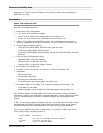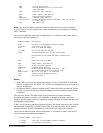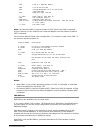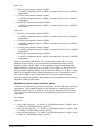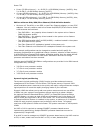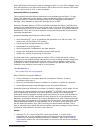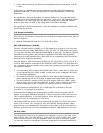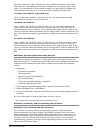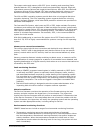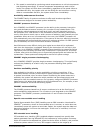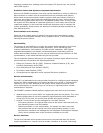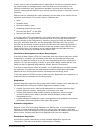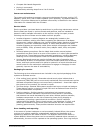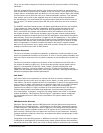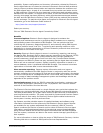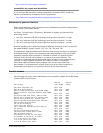
IBM Europe, Middle East, and Africa Hardware
Announcement ZG10-0214
IBM is a registered trademark of International Business Machines Corporation
12
The system cache and memory offer ECC (error checking and correcting) fault-
tolerant features. ECC is designed to correct environmentally induced, single-bit,
intermittent memory failures and single-bit hard failures. With ECC, the likelihood
of memory failures will be reduced. ECC also provides double-bit memory error
detection that helps protect data in the event of a double-bit memory failure.
The AIX and IBM i operating systems provide disk drive mirroring and disk drive
controller duplexing. The Linux operating system supports disk drive mirroring
(RAID 1) through software, while other RAID protection schemes are provided via
hardware RAID adapters.
The Journaled File System, also known as JFS or JFS2, helps maintain file system
consistency and reduces the likelihood of data loss when the system is abnormally
halted due to a power failure. JFS, the recommended file system for 32-bit kernels,
now supports extents on the Linux operating system. This feature is designed to
reduce or eliminate fragmentation. Its successor, JFS2, is the recommended file
system for 64-bit kernels.
With 64-bit addressing, a maximum file system size of 32 TB and maximum file
size of 16 TB, JFS2 is highly recommended for systems running the AIX operating
system.
Memory error correction extensions
The memory has single-bit-error correction and double-bit-error detection ECC
circuitry. The ECC code is also designed such that the failure of any one specific
memory module within an ECC word by itself can be corrected absent any other
fault.
Memory protection features include scrubbing to detect errors, a means to call for
the deallocation of memory pages for a pattern of correctable errors detected, and
signaling deallocation of a logical memory block when an error occurs that cannot be
corrected by the ECC code.
Fault monitoring functions
• When a POWER7 processor-based system is initially powered on, BIST (built-
in self-test) and POST (power-on self-test) check processor, cache, memory,
and associated hardware required for proper booting of the operating system.
If a noncritical error is detected or if the errors occur in resources that can be
removed from the system configuration, the restarting process is designed to
proceed to completion. The errors are logged in the system nonvolatile RAM
(NVRAM).
• Disk drive fault tracking is designed to alert the system administrator of an
impending disk drive failure before it impacts customer operation.
Mutual surveillance
The Service Processor monitors the operation of the firmware during the boot
process, and also monitors the Hypervisor
TM
for termination. The Hypervisor
monitors the Service Processor and will perform a reset/reload if it detects the loss
of the Service Processor. If the reset/reload does not correct the problem with the
Service Processor, the Hypervisor will notify the operating system and the operating
system can take appropriate action, including calling for service.
Environmental monitoring functions
POWER7 based servers include a range of environmental monitoring functions:
• Temperature monitoring warns the system administrator of potential
environmental-related problems by monitoring the air inlet temperature. When
the inlet temperature rises above a warning threshold, the system initiates an
orderly shutdown. When the temperature exceeds the critical level or if the
temperature remains above the warning level for too long, the system will shut
down immediately.



